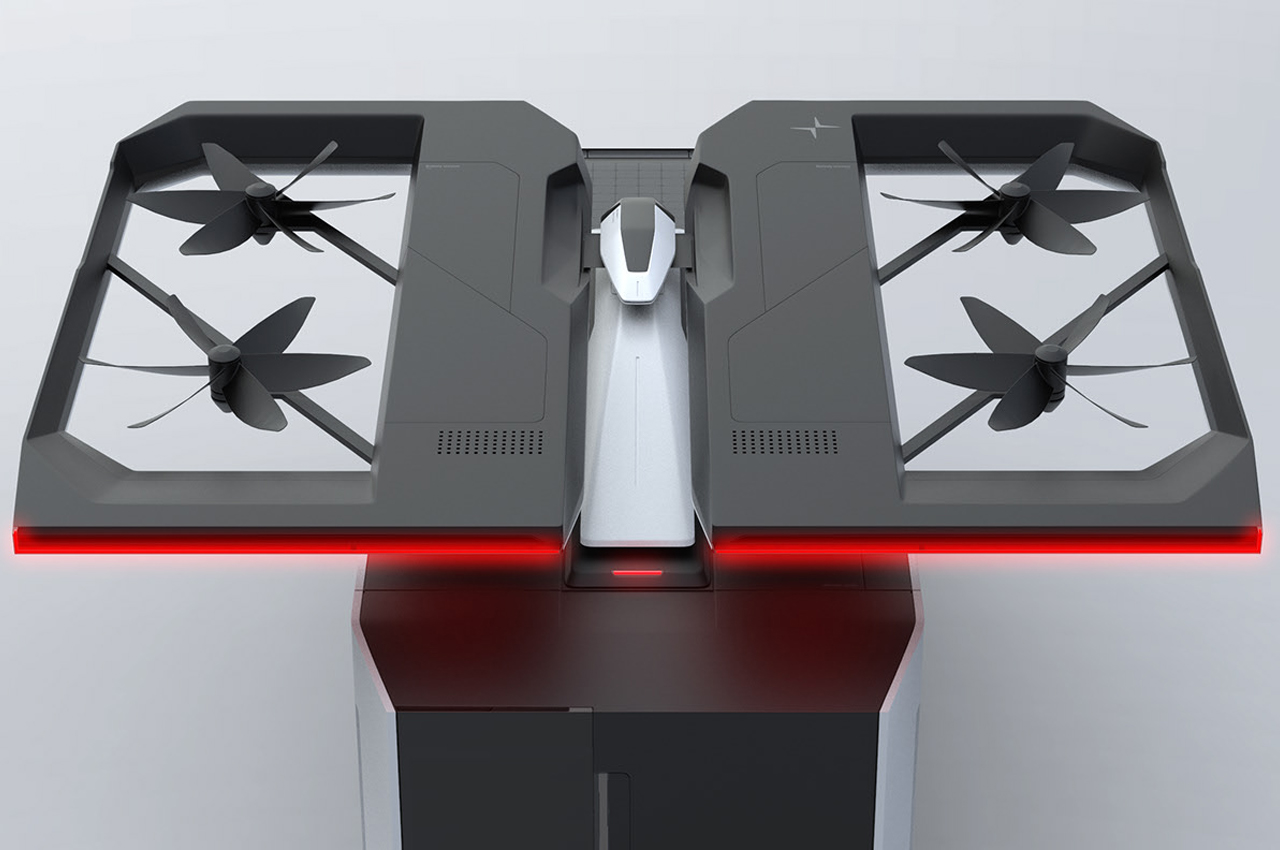
Polestar Duo is an itinerant vehicle that merges autonomous drone technology with a hybrid modular building to provide emergency relief.
In the age of COVID-19, one thing’s for certain—the need for autonomous, mobile emergency services is more urgent than ever before. When faced with unprecedented crises, dwindling resources make it hard to respond with tact. Considering the modern world’s technological advantage, innovative task forces and emergency services should be made readily available to help prevent catastrophe.
Designer: Marcelo Aguiar
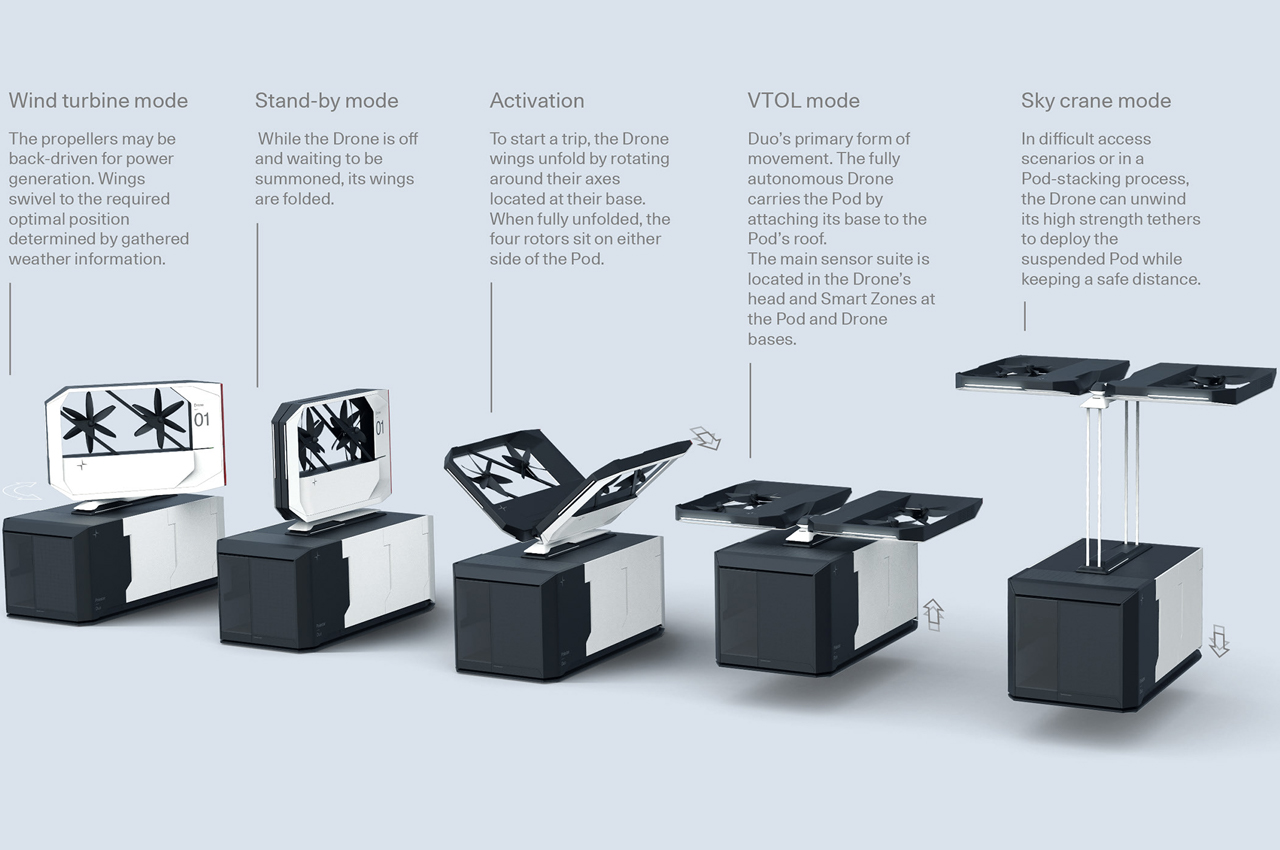
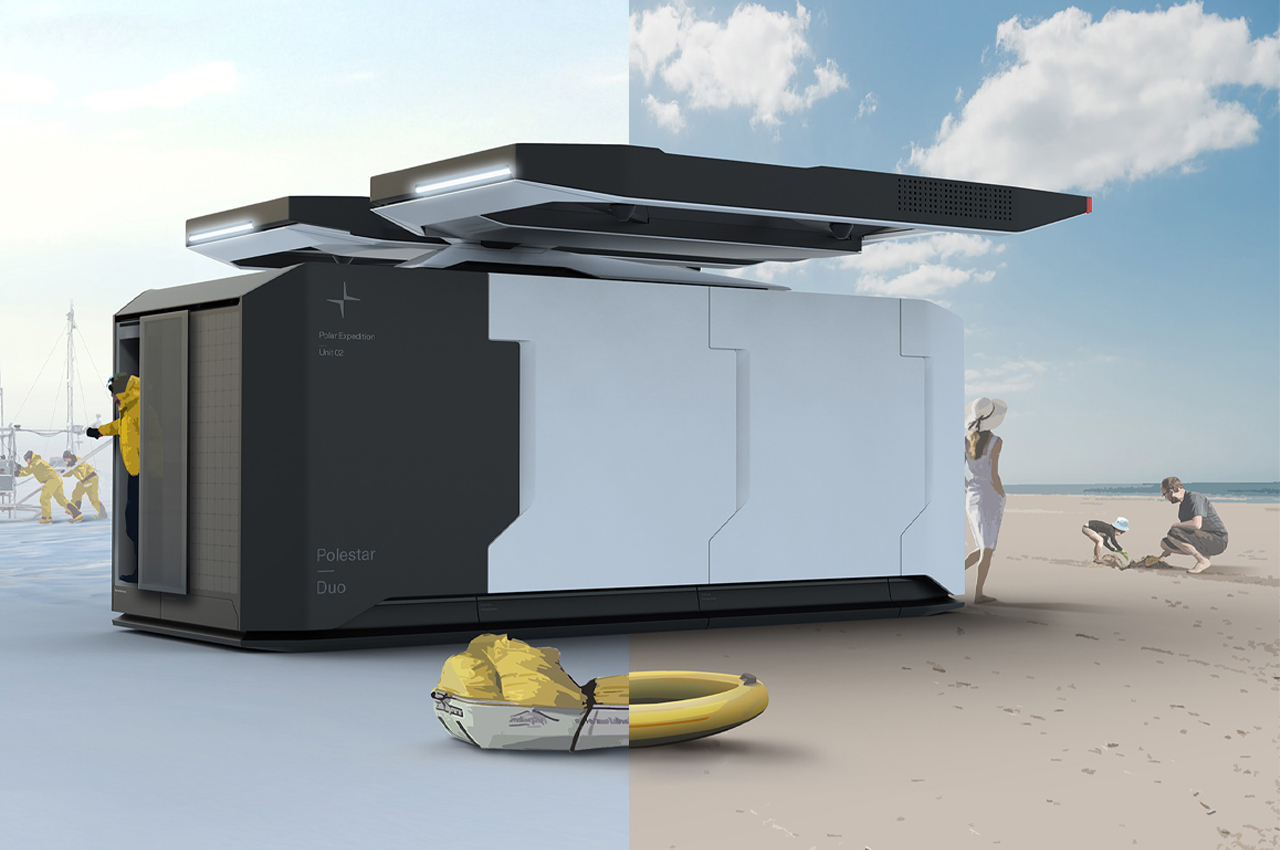
Marcelo Aguiar, Chief Automotive Designer at electric car startup UNITI Sweden, recently devised a concept for a vehicle that blends autonomous drone technology with a hybrid modular building to create an accessible means to respond to any disaster.
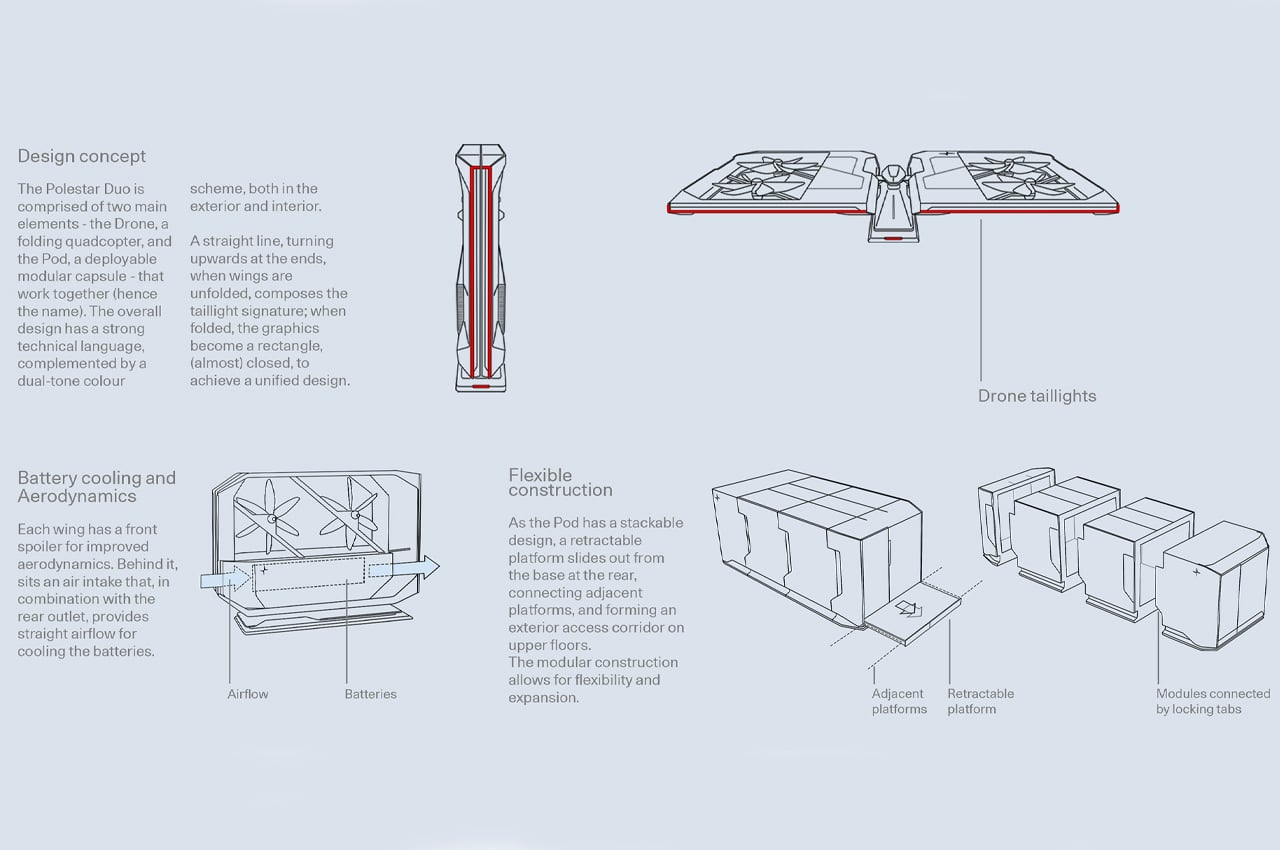
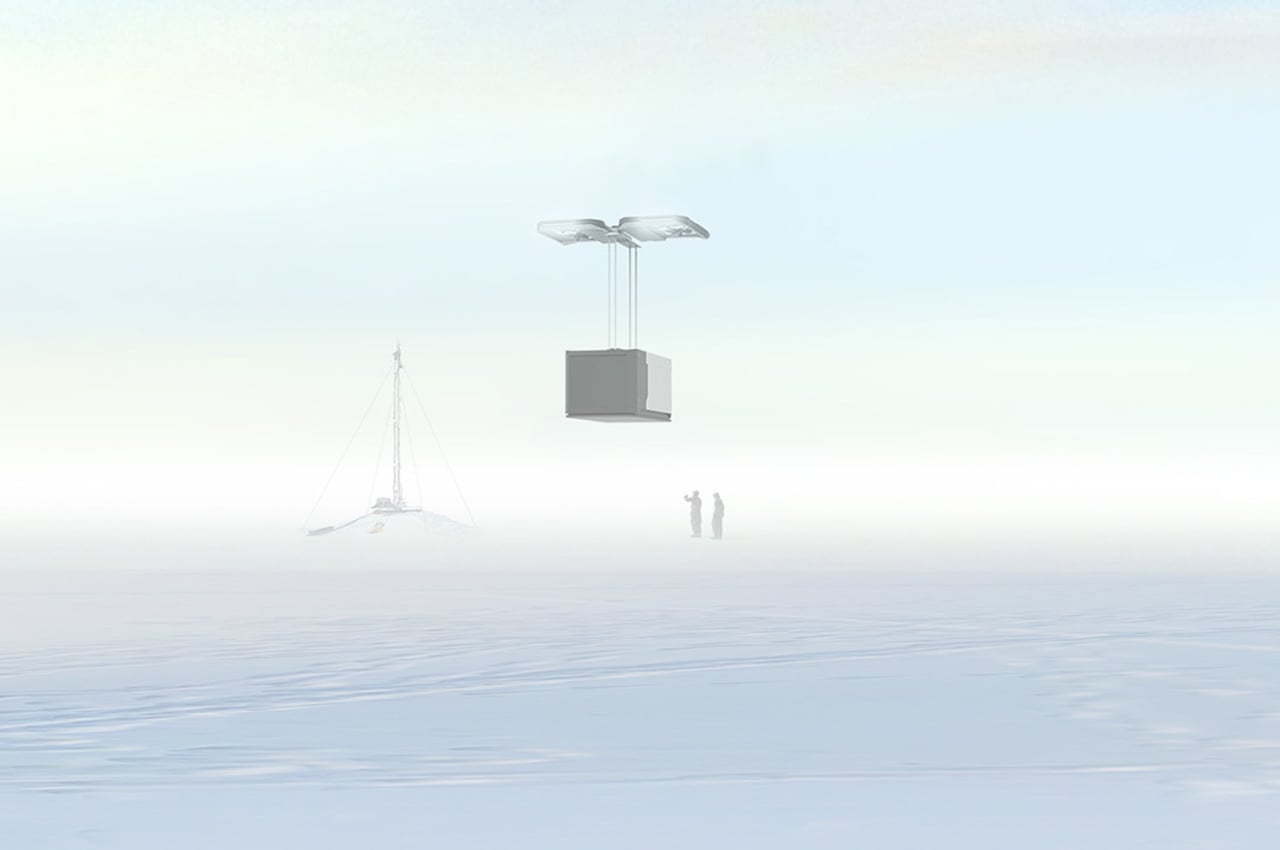
Designed for the Polestar Design Competition, Aguiar’s Polestar Duo appears like a multifunctional shipping container that travels via drone technology.
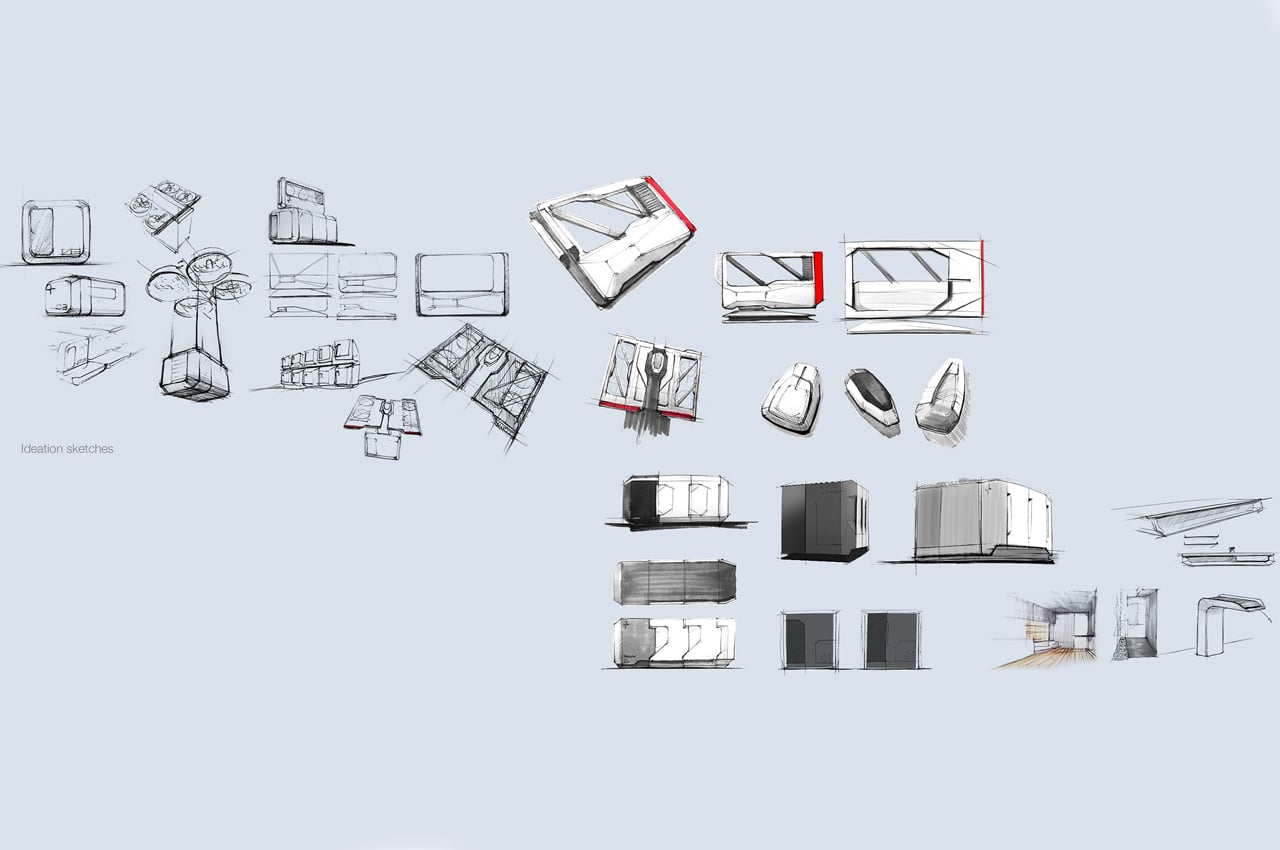
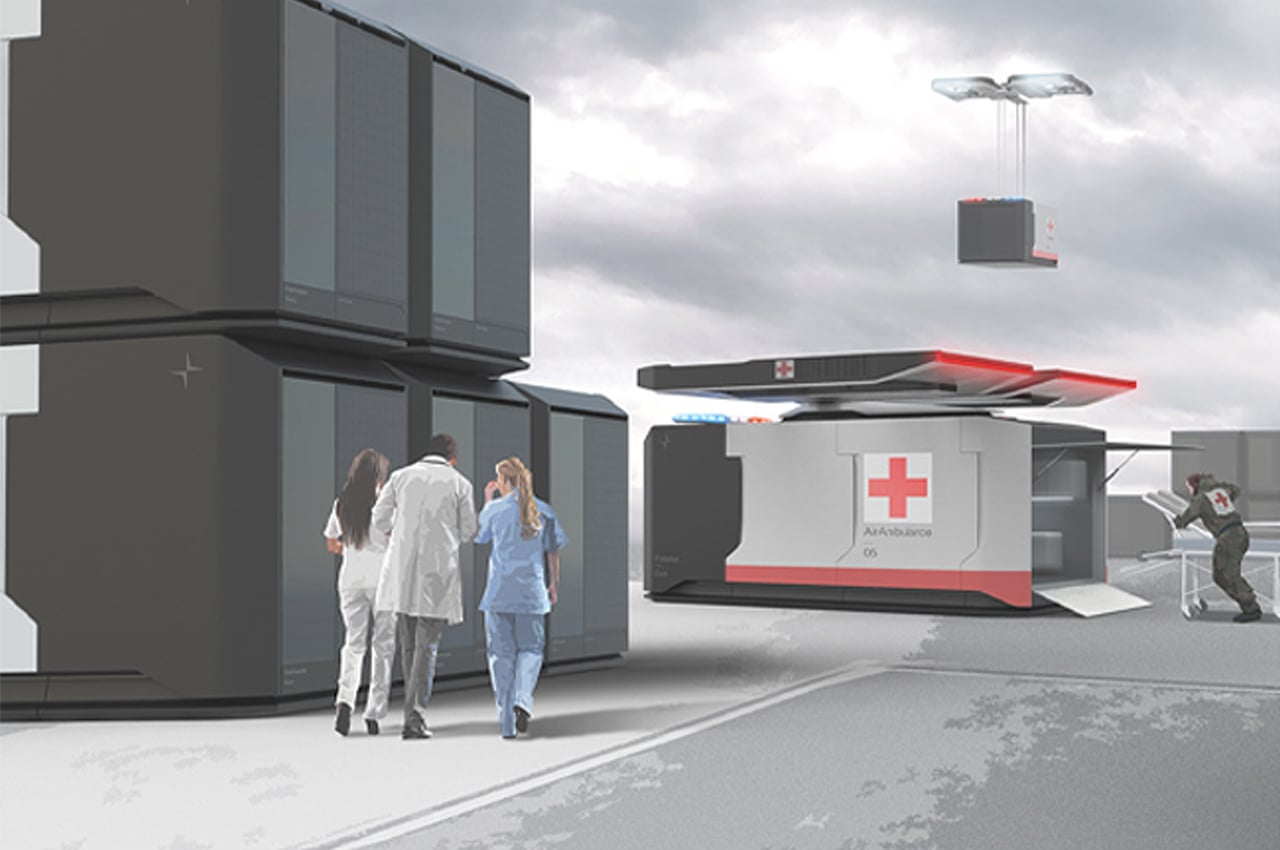
Aguiar conceptualizes Polestar Duo to be flexible, adaptable, and itinerant, to be able to “perform in a variety of scenarios adopting different functions: it can work as a rescue vehicle, be used as pop-up structure or temporary accommodation, provide support in humanitarian crisis situations, be a mobile off-grid home to enable a more itinerant lifestyle.”
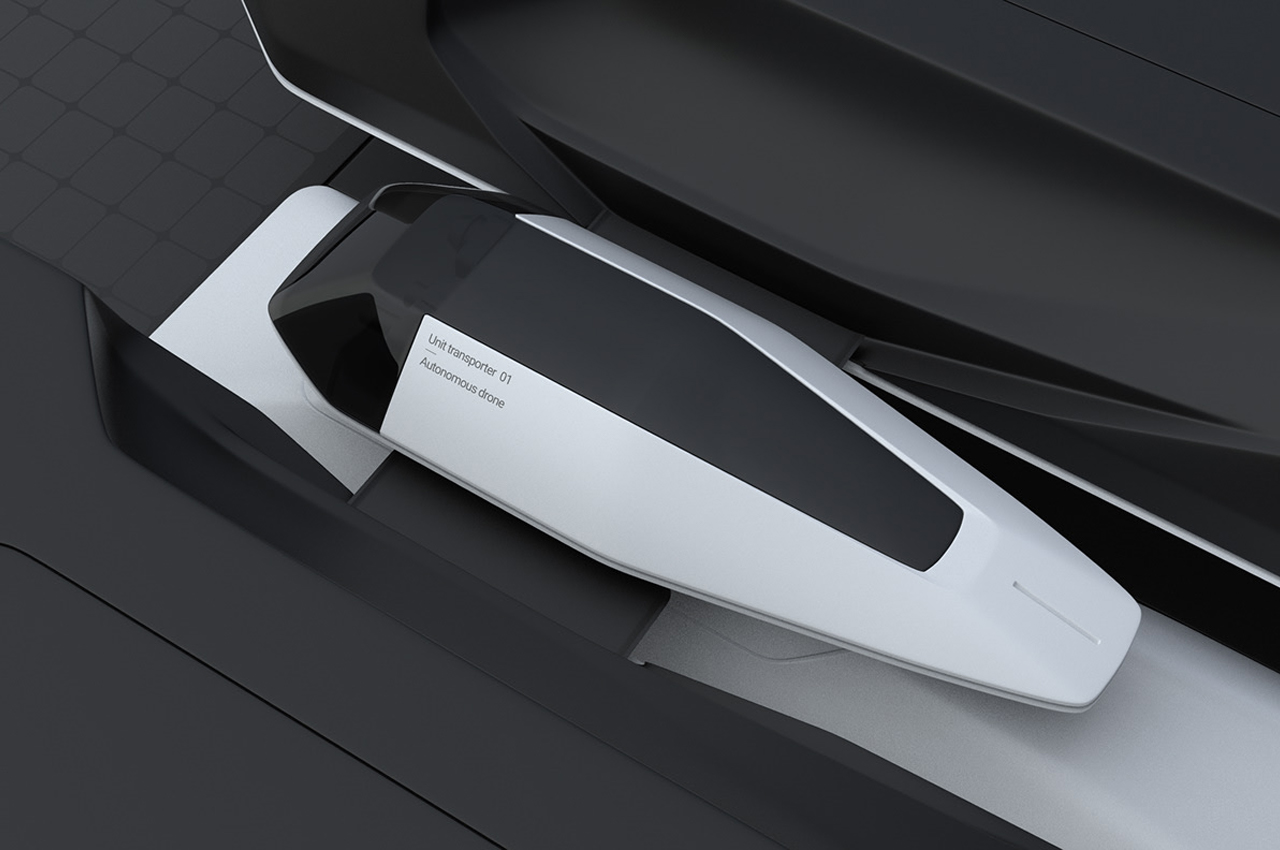
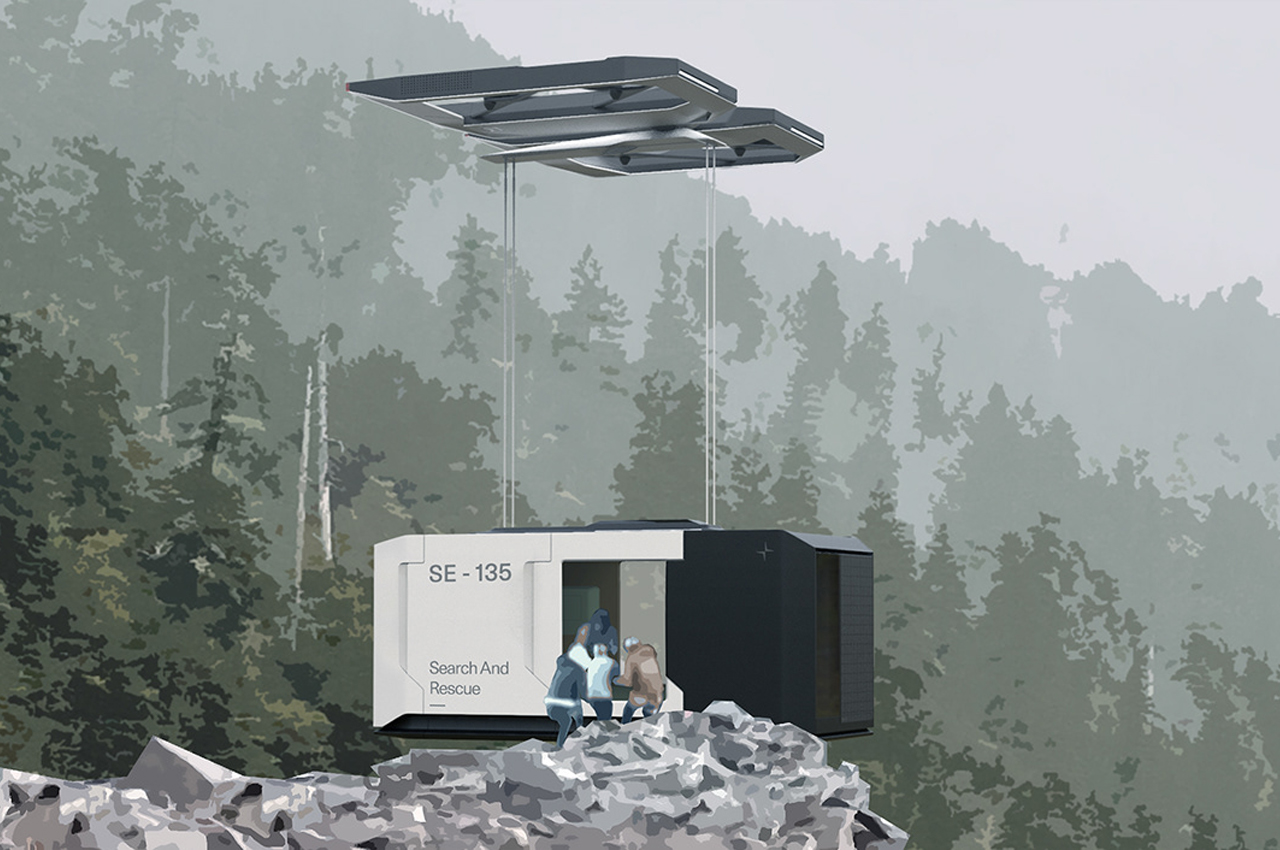
Equipped with a wind turbine, the Polestar Duo operates from a pair of back-driven propellers with wings that swivel to the optimal position considering the given day’s weather and wind conditions. Before taking flight, Polestar Duo’s wings unfold by rotating along their axes.
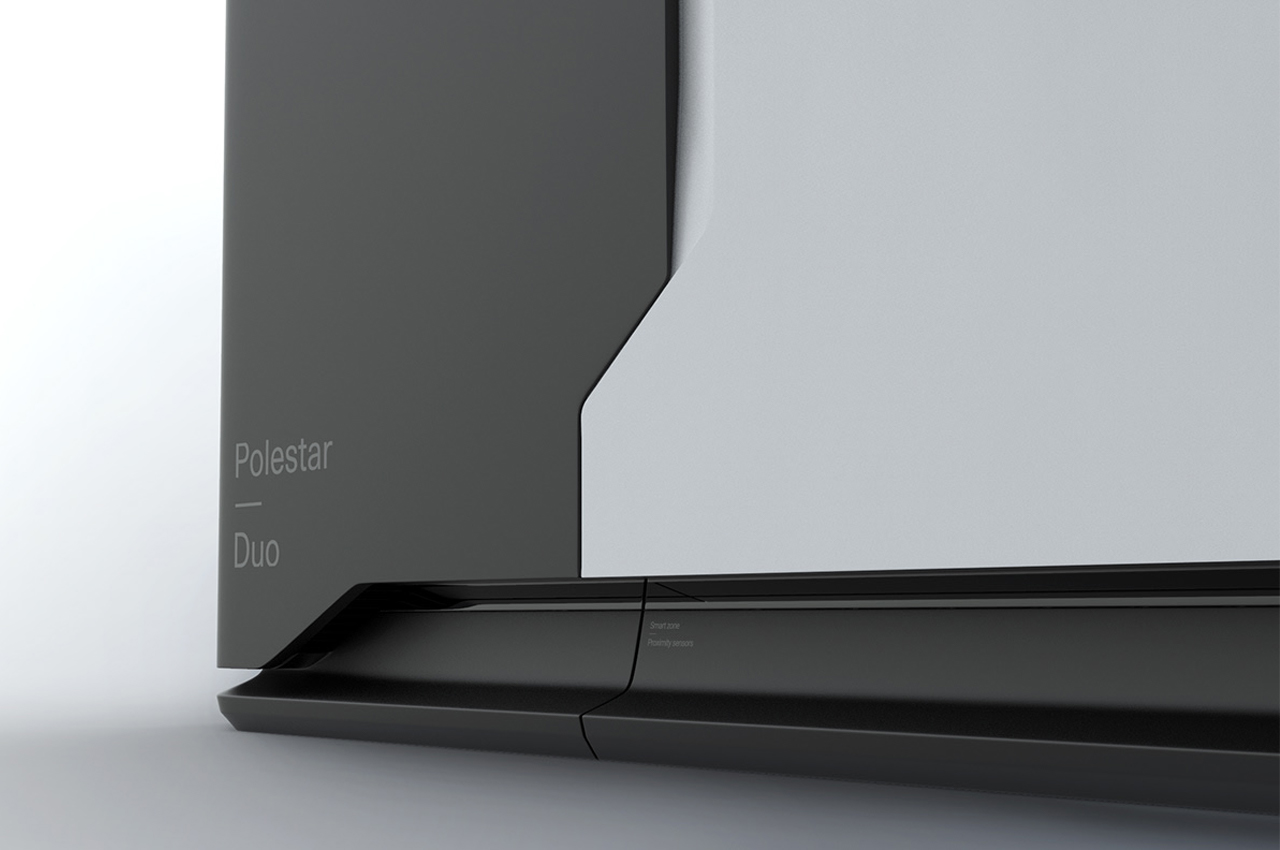
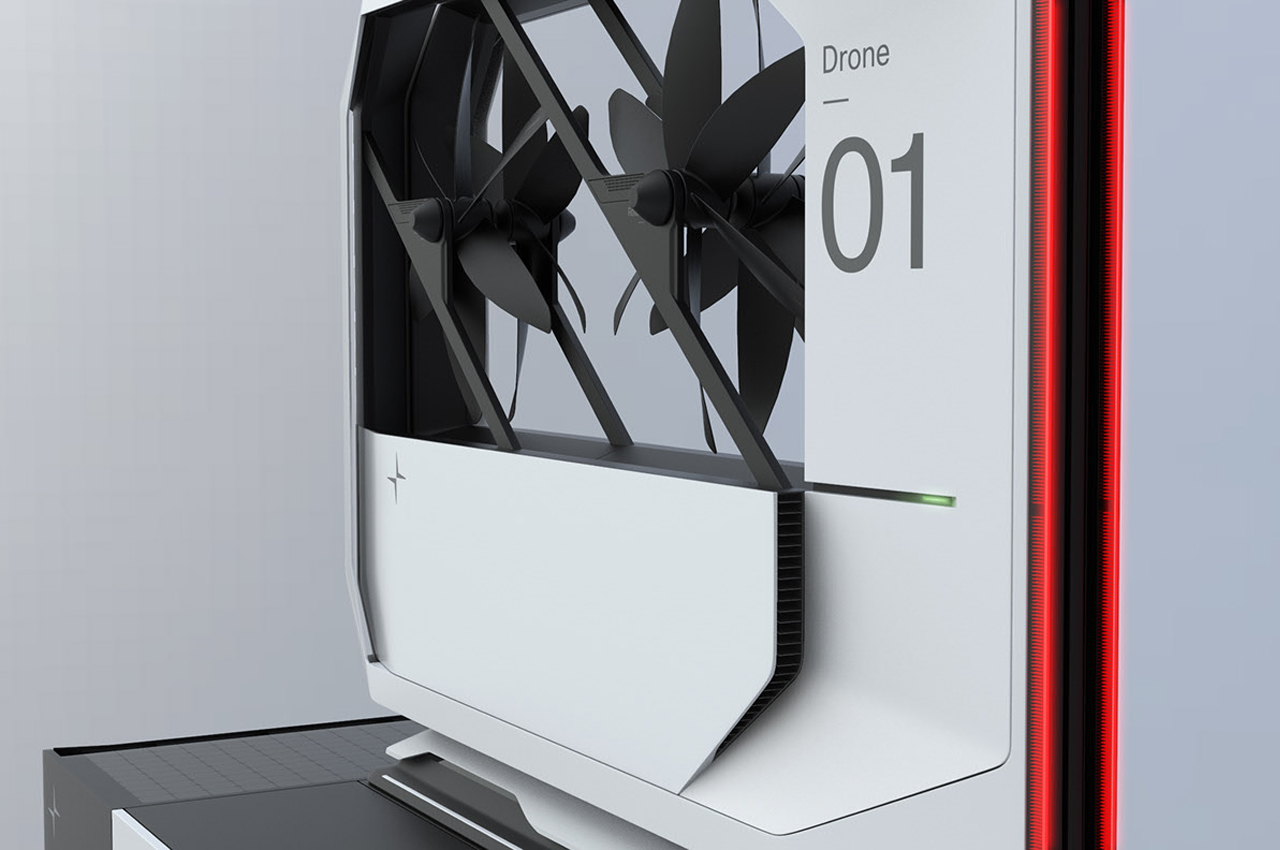
The integrated drone technology carries Polestar Duo’s Pod, which functions as the hybrid modular building, by attaching the Pod’s roof to the drone’s base. In difficult access scenarios, Polestar Duo deploys high-strength tethers that suspend the Pod from the drone’s base.
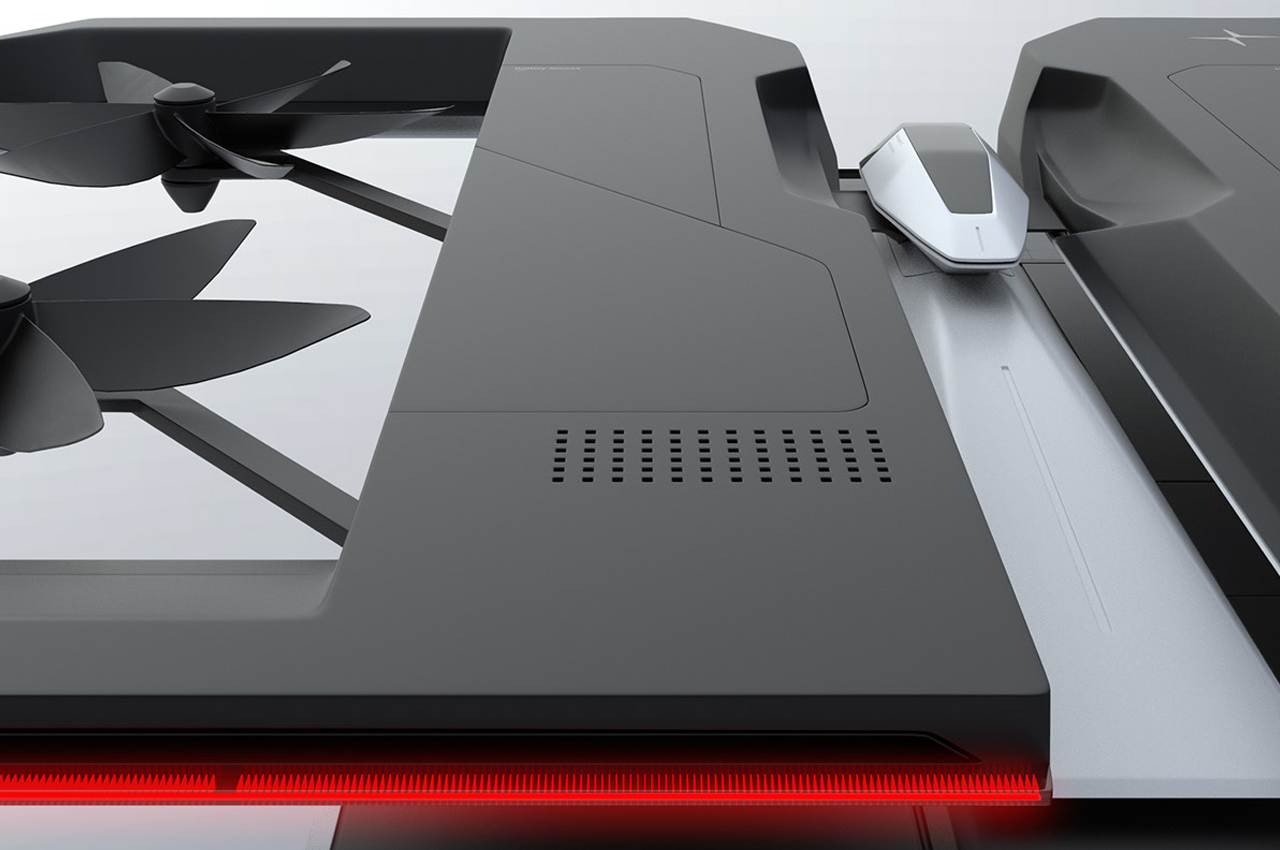
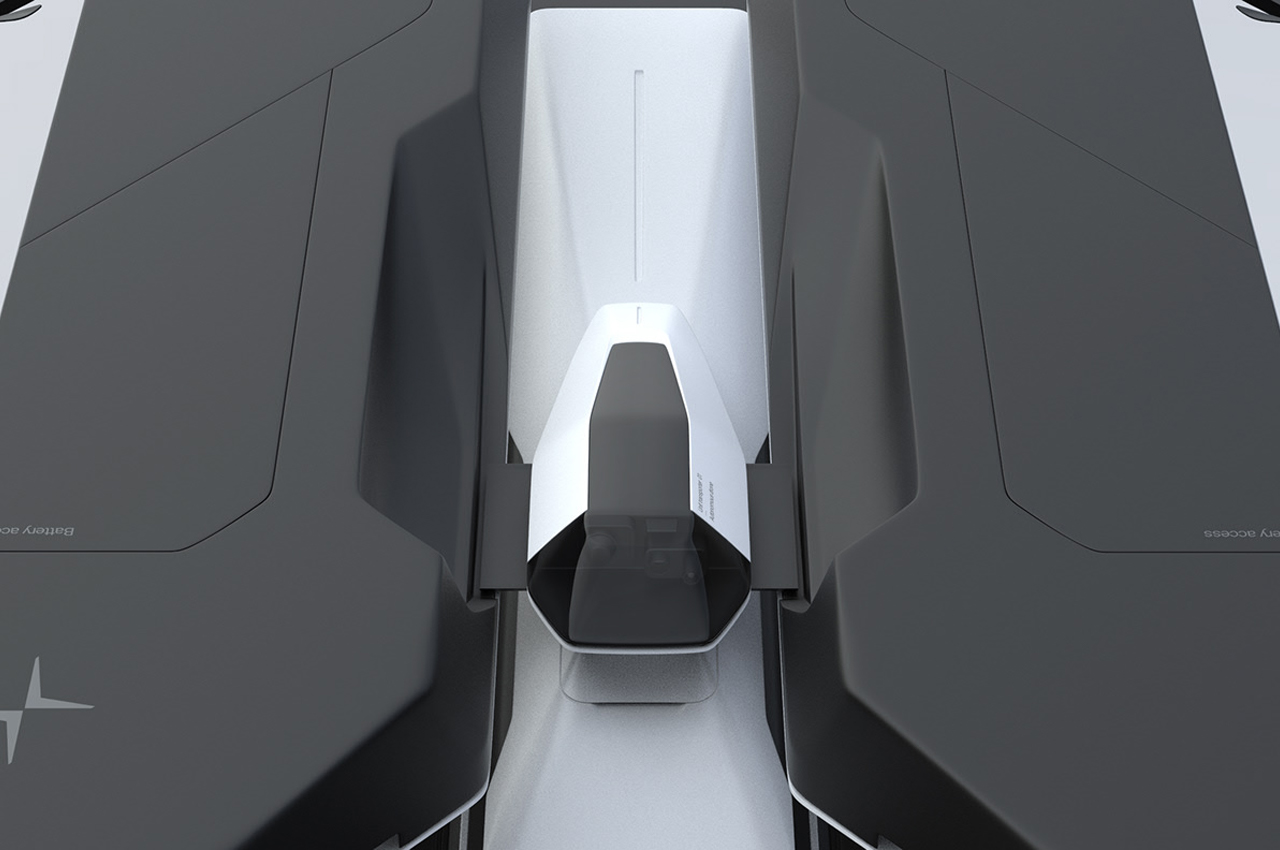
Merging today’s appeal to sustainable design with autonomous technology, the vehicle’s overall carbon footprint remains low due to the use of recycled and lightweight building materials, re-adaptability, and local power generation. Aguiar goes on to explain that, “this reduces the load on available resources while building, and becoming, a versatile infrastructure to support societal progress.”
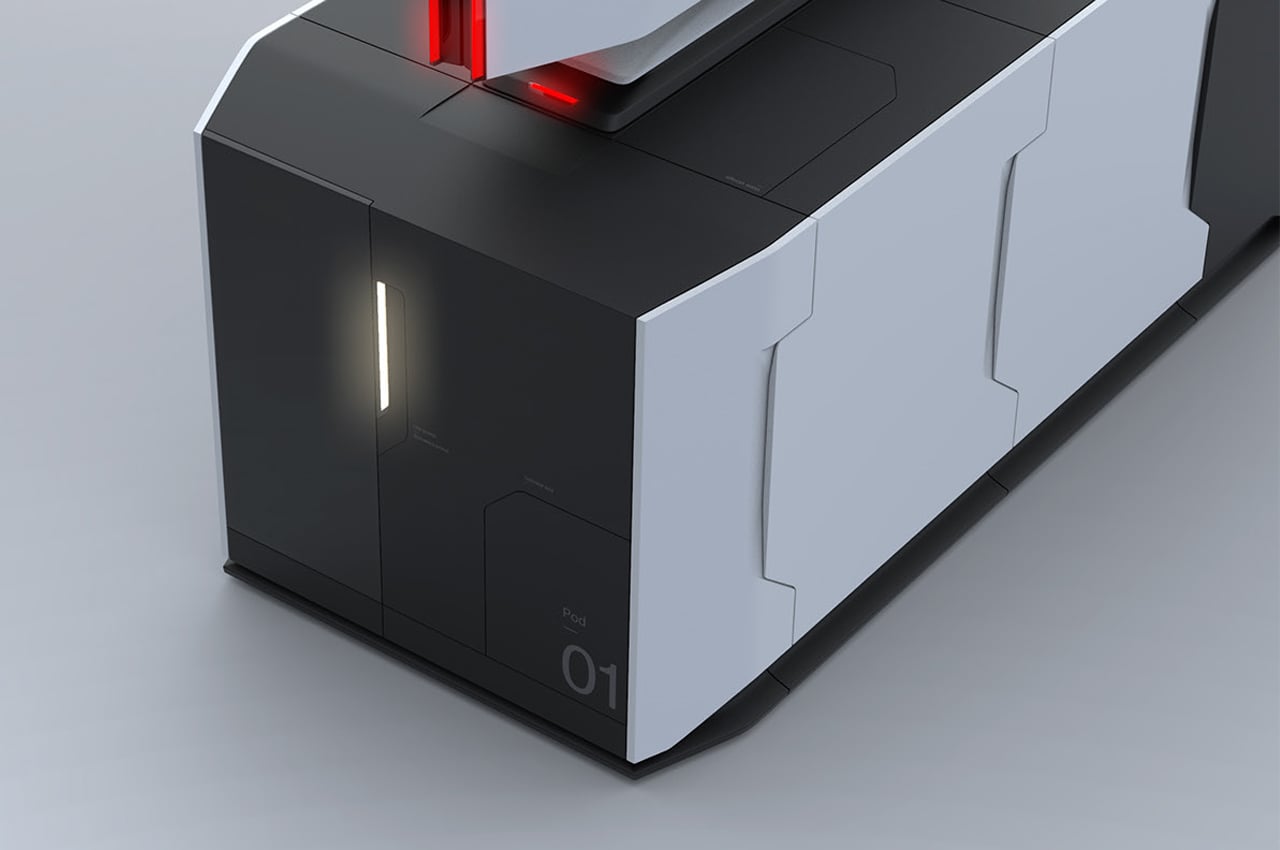
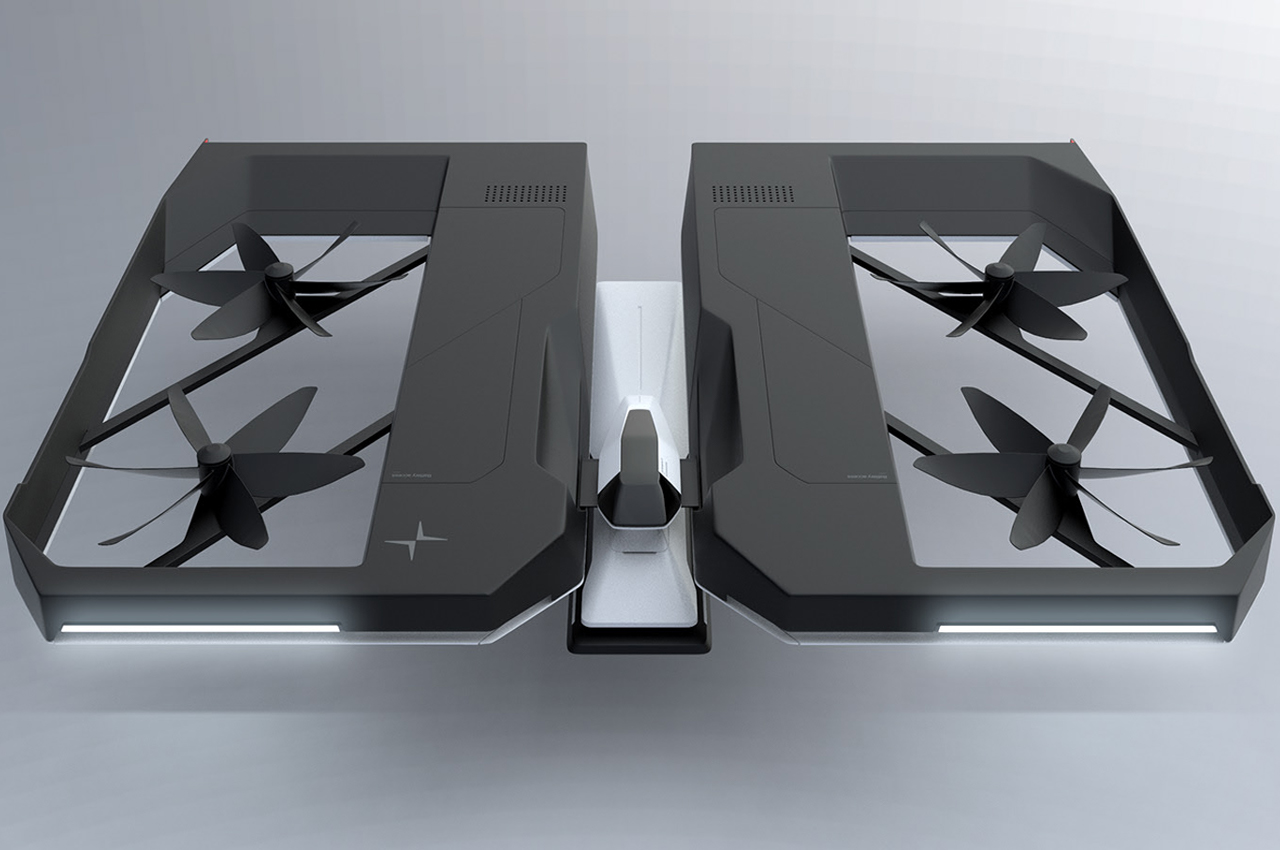
Twin wings unfold at Polestar Duo’s axes to take flight.
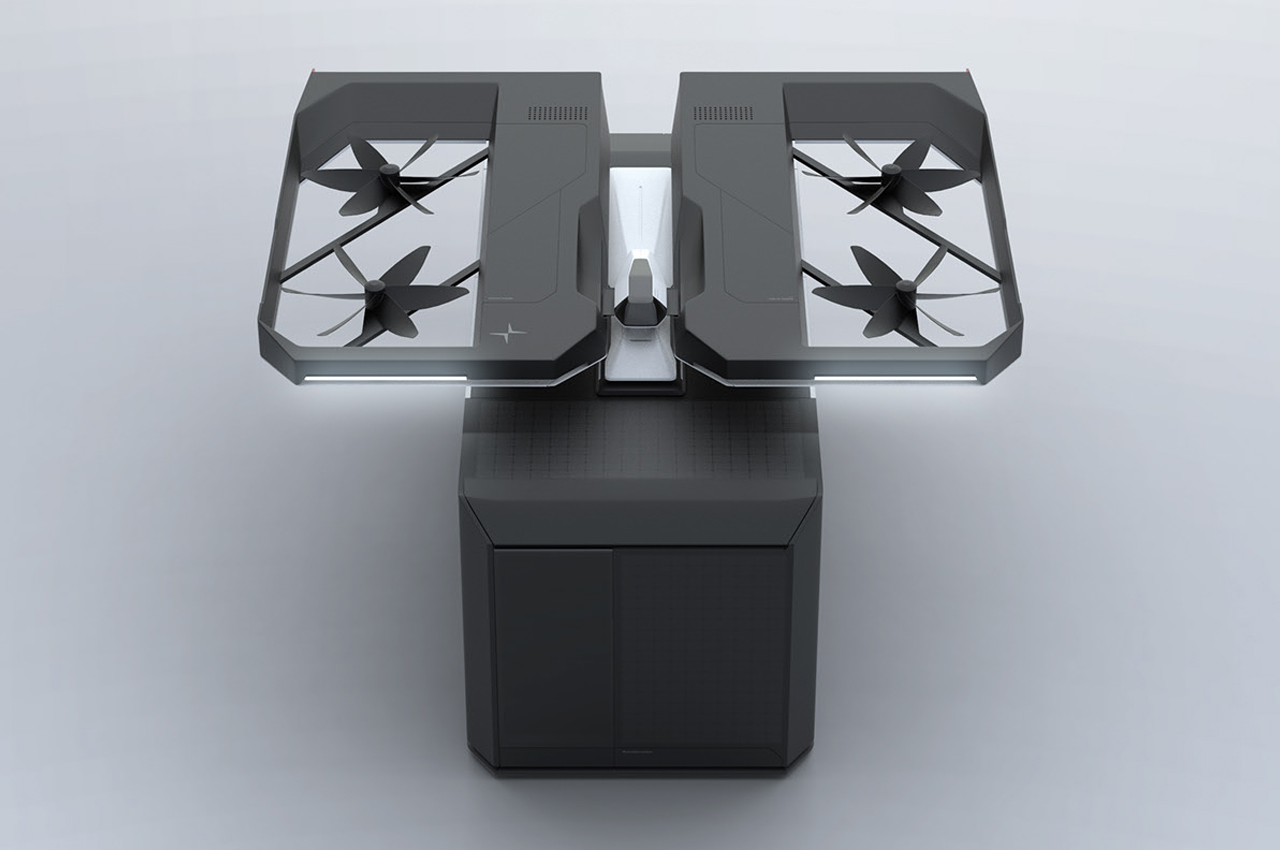
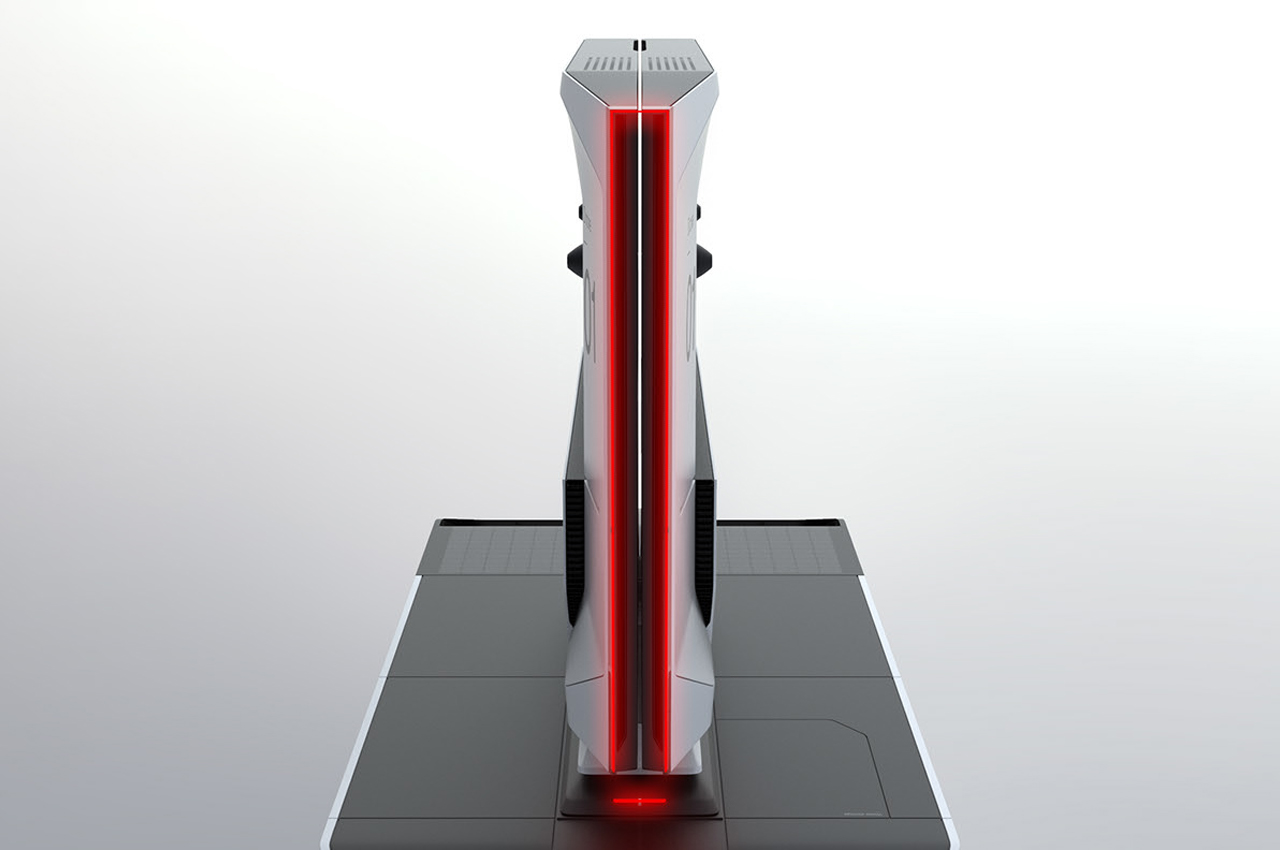
When idle, Polestar Duo’s wings fold up.
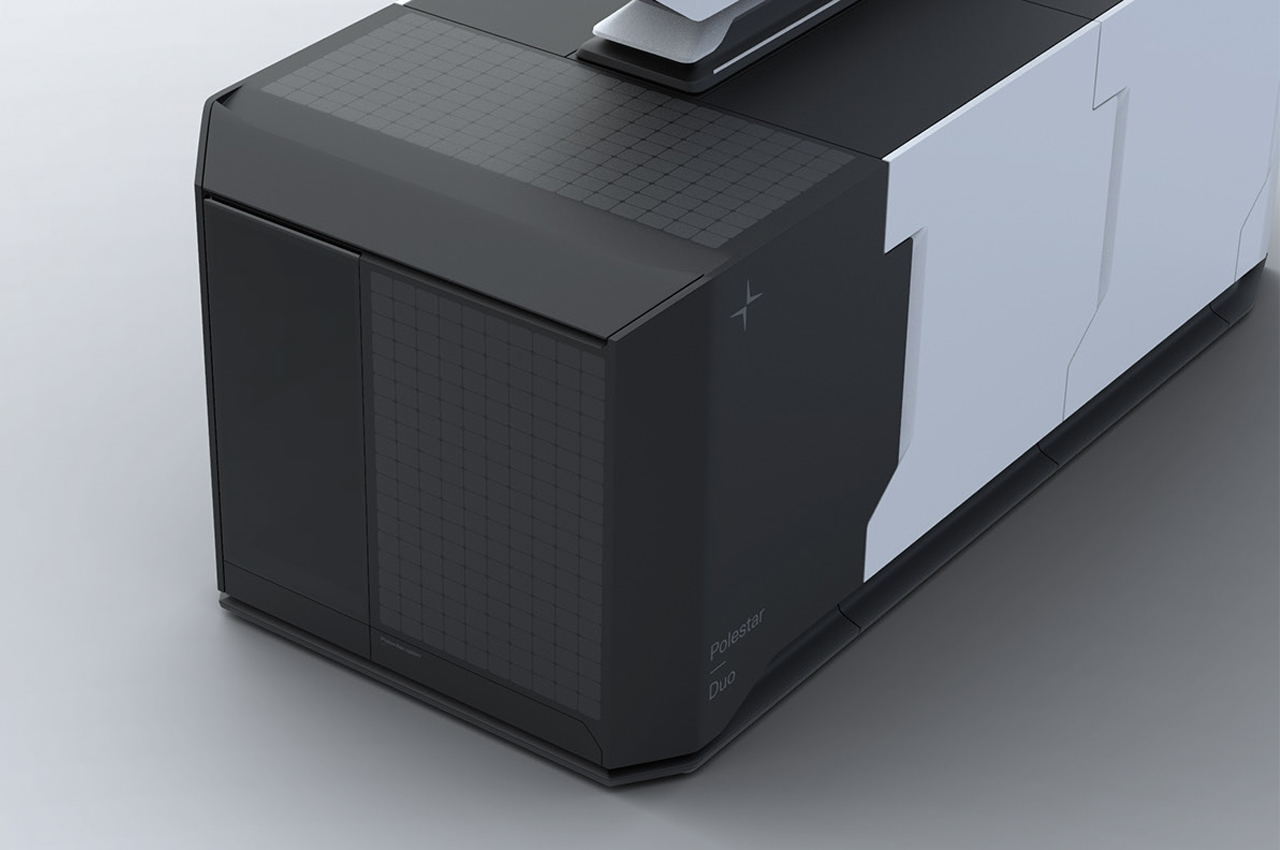
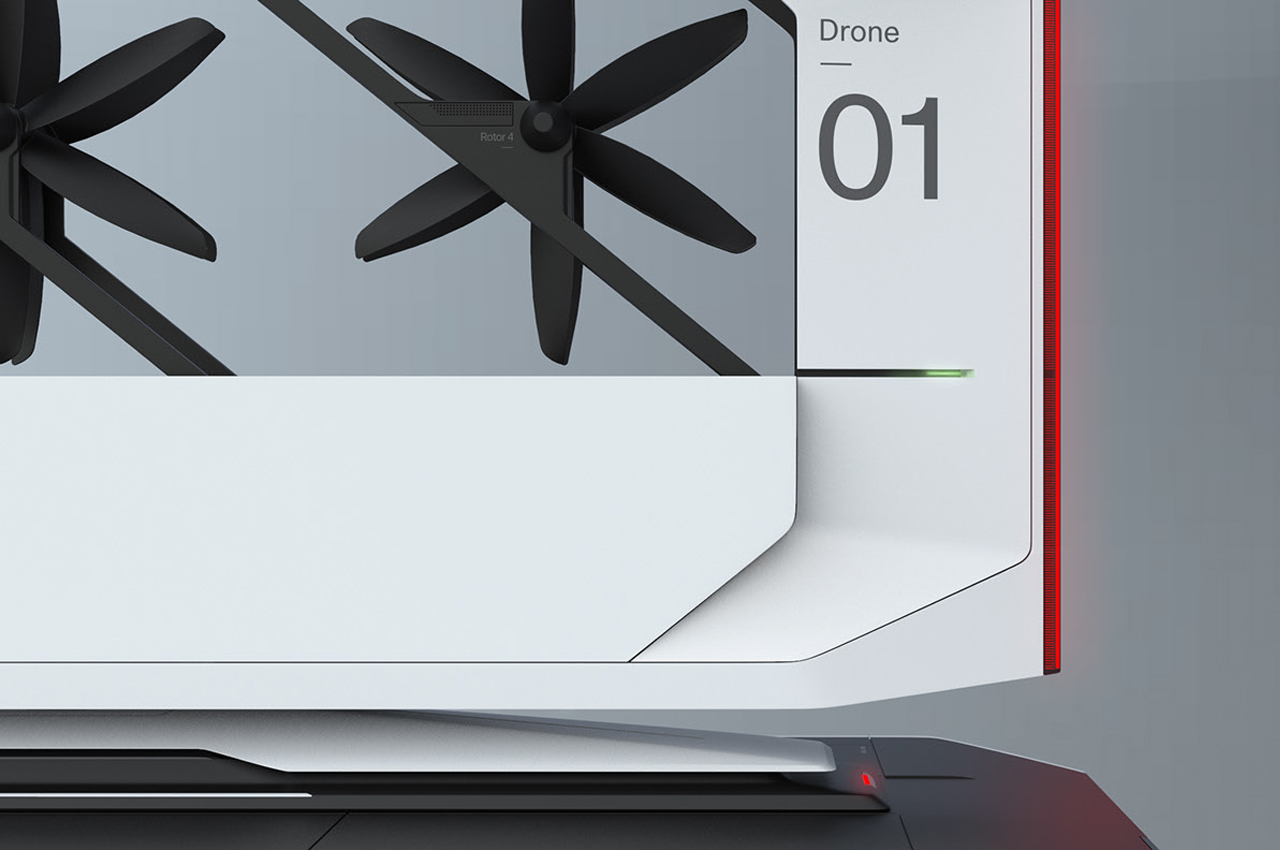
Polestar Duo is comprised of two main parts: the drone and the folding quadcopter.
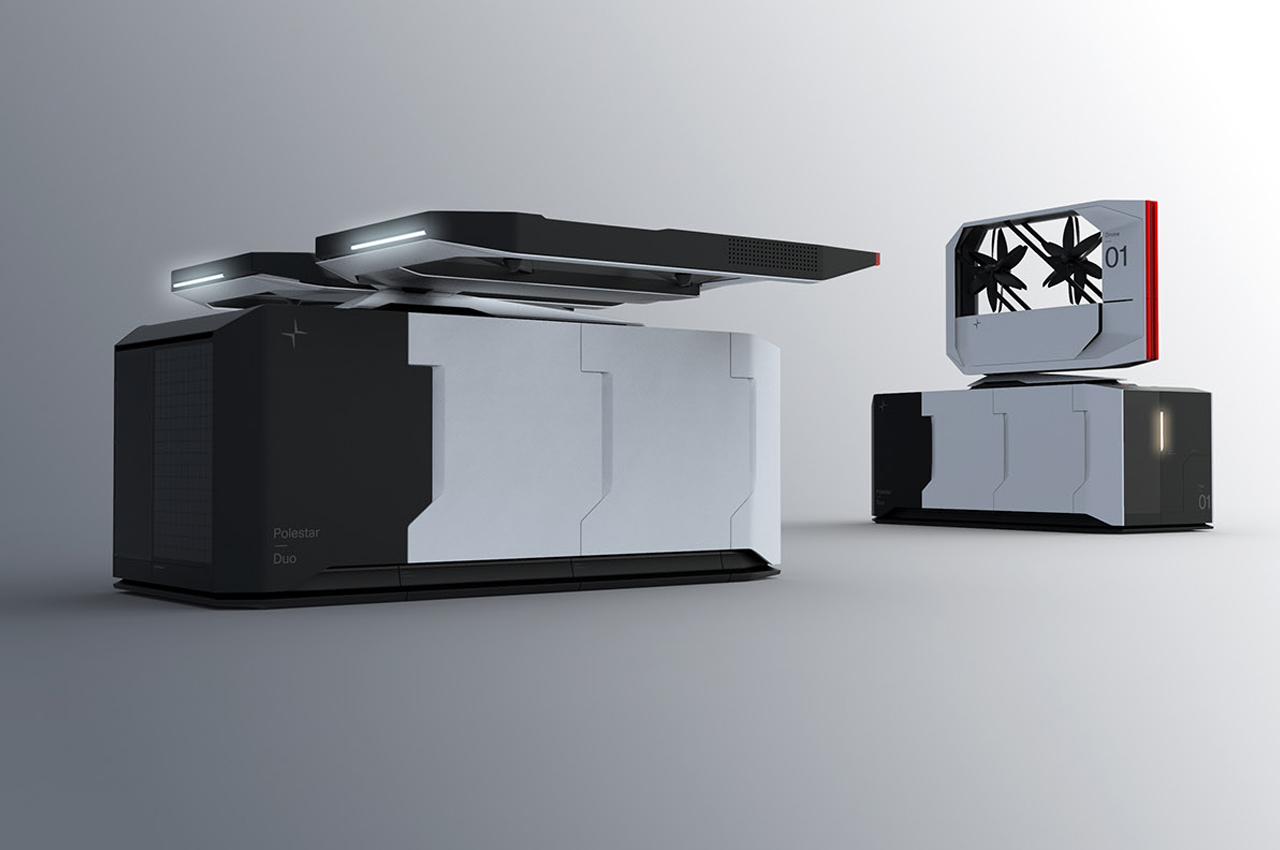
The Pod attaches to the drone’s base for secure transportation.
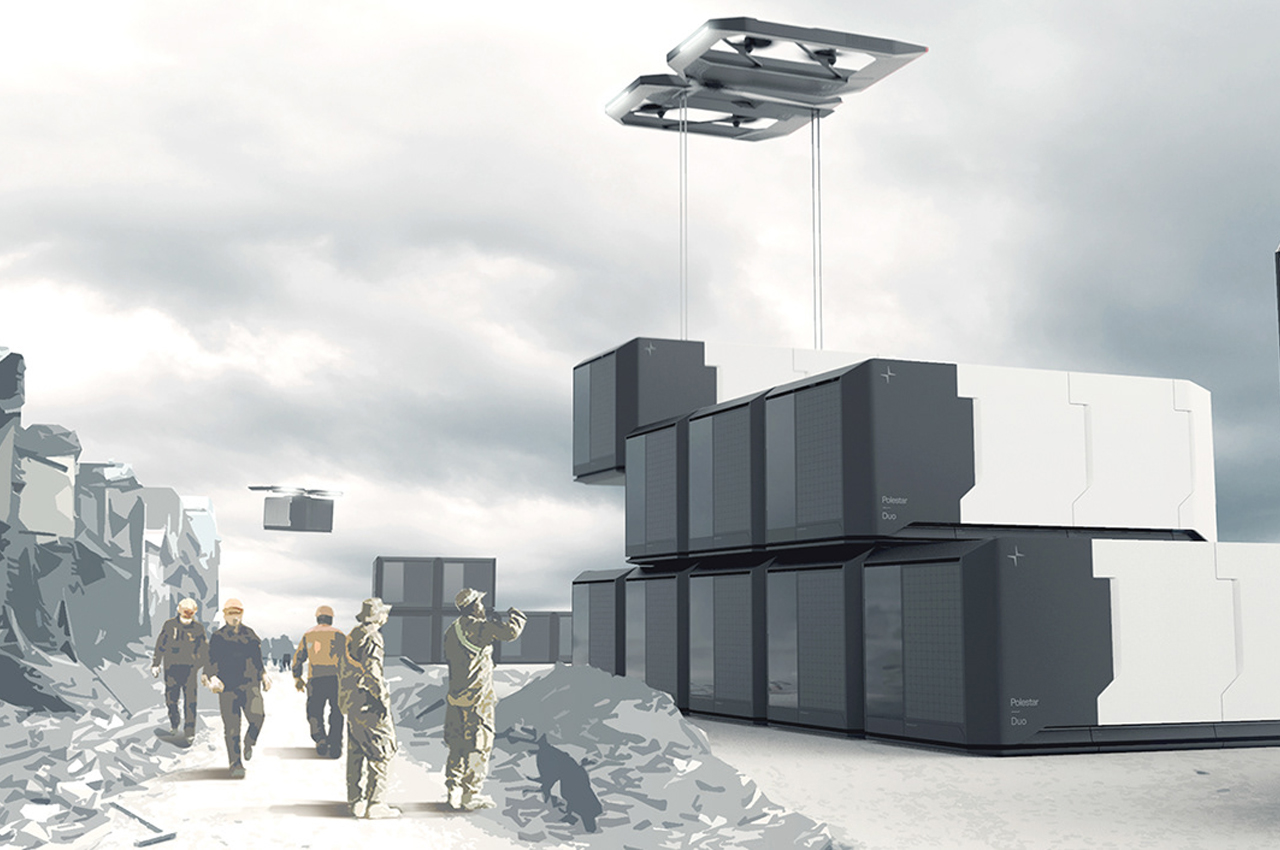
In difficult access scenarios, the Pod suspends from the drone’s quadcopter via high-strength tethers.
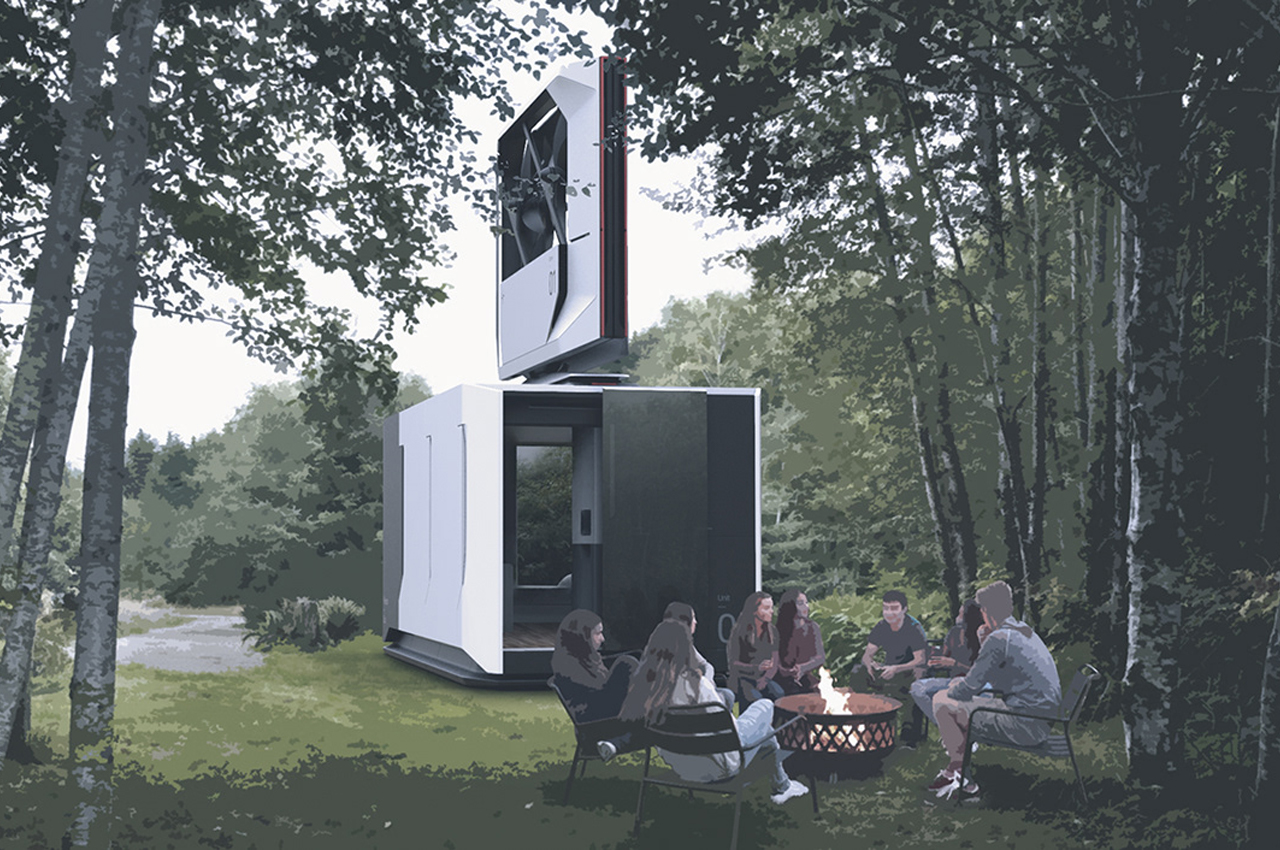
Outside of emergency services, Polestar Duo can be used as temporary living accommodations.
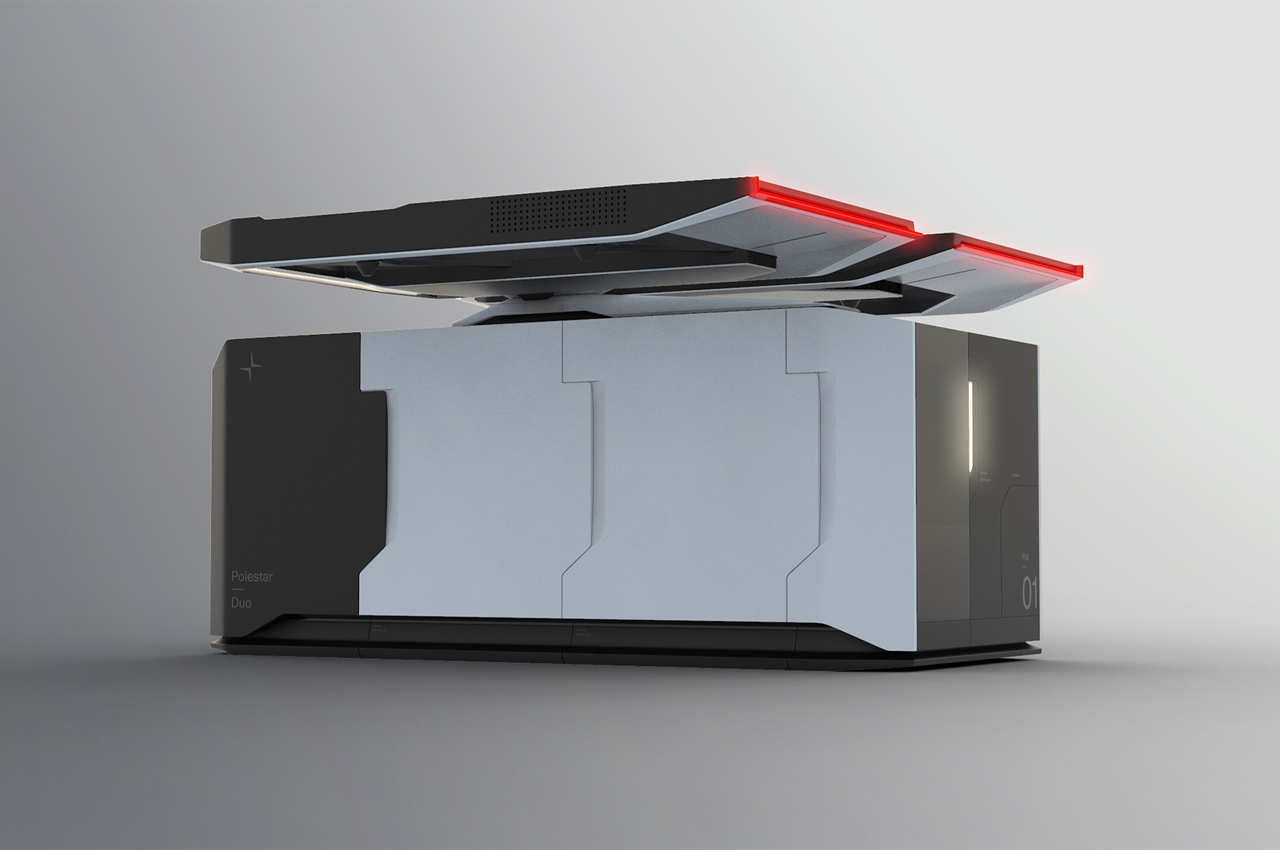
The post Polestar’s emergency vehicle uses autonomous drone technology to respond to catastrophe first appeared on Yanko Design.
0 Commentaires